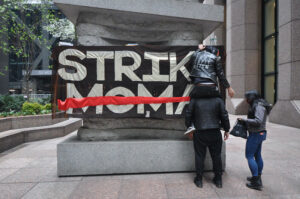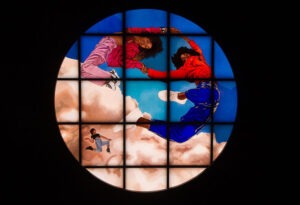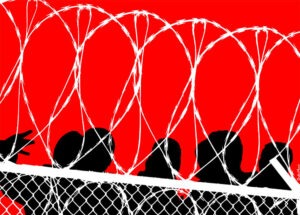May 4, 2016; Philadelphia Inquirer
Following 200 years of setting positive and negative trends nationwide on prison policies, including some of the first uses of solitary confinement in the states, the Eastern State Penitentiary was converted into a museum in 1990 after shutting down in 1970. Just prior to closing, the prison piloted a program attempting to rehabilitate prisoners through therapy, just one among the elements of criminal reform that originated in the Pennsylvania prison system and, eventually, modeled by other prisons around the world.
When it reopened as a museum, those behind ESP wanted it to spur dialogue about criminal justice reform, given its history as one of the most influential prisons in American history. To help fulfill that mission, the penitentiary is launching the country’s first major exhibit on mass incarceration as a call to action to educate its visitors not only on the history of the prison, but what’s occurring in prisons today.
Three years in the making, the exhibit “Prison Today”—at $360,000, it’s reportedly the museum’s most ambitious—opens this Friday. “Prison Today” combines sociology and criminology to ask essential questions of the current state of the criminal justice system in an interactive way: What are prisons for? Are they doing their job? More specifically, does the United States use prisons to primarily rehabilitate, contain inmates, deter crime, or to mete out retribution for crimes?
According to the museum’s website, the exhibit will use film, art, and digital media to personally engage visitors with the statistics on incarceration. It will take visitors through the policies that have lead to present day mass incarceration. An interactive art exhibit will ask visitors to leave their confessions, perhaps of a crime, which will be placed side by side with the confessions of inmates:
Anonymous written confessions will be presented from both groups without identifying if the confessor was punished for the crime. The viewer is left to guess which crimes resulted in prison terms and which did not. Visitors to the installation may also confess to crimes they have committed—presumably without consequence—and their confessions will be incorporated into the work over time.
The exhibit places great emphasis on humanizing inmates and deconstructing the reasons behind mass incarceration. The museum asked photographer Gabriela Bulisova to create a series of short films featuring individuals who have been part of the state correctional system, including former inmates and those currently serving life sentences. As part of a pilot program to be employed through June, the exhibit will also include tour guides who have served in prison themselves.
Sign up for our free newsletters
Subscribe to NPQ's newsletters to have our top stories delivered directly to your inbox.
By signing up, you agree to our privacy policy and terms of use, and to receive messages from NPQ and our partners.
“We’ve been putting people away from their families, their communities, for a long time,” said Bulisova. “Whether it’s children with incarcerated parents, or parents coming out of prison, or family members stepping in to replace the incarcerated individual, they all have really compassion-inspiring, human stories.”
As noted by Sean Kelley, director of interpretation and public programming at the museum, they want visitors to understand that the level at which the U.S. has incarcerated its citizens is a reflection of its policies, not due to increased criminal behavior.
“Prison Today” complements a smaller exhibit on prison reform by the museum in 2014 called “The Big Graph,” which is quite literally a 16-foot-tall bar graph that represents visually how the United States compares to other countries in the arena of incarceration. Given the change in criminal justice policies starting in the 1970s, with more people being sentenced to prison and longer prison sentences, the United States has boasted the largest number of incarcerated people of any country, at 2.2 million people. Yet, while the prison population has increased, the crime rate has remained stagnant.
“The pattern is jaw-dropping,” said Kelley. “Mass incarceration isn’t working. We’re statistically no safer today than we were in 1970. It’s not working, so what’s next?”
As noted by the Inquirer, “Prison Today” seems to offer some interpretations of the data on incarceration, whereas “The Big Graph” presented the statistics alone. Prior to “The Big Graph,” some saw the museum as essentially looking at its history in a vacuum. And indeed, it is unique for a museum to be, at least implicitly, advocating for policy changes or the reform in the area it is meant to be documenting. However, the museum’s decision to embark on this road to educate, inform and advocate has been well received so far.
“For many years, ESP’s preservation mission enabled a kind of historical amnesia. Visitors could, if they chose to, appreciate the ‘preserved ruin’ as just a ghostly trace of a distant past. The Big Graph shatters that illusion,” wrote Seth Bruggeman, a Temple University historian who had previously criticized the museum for its failure to comment on criminal justice reform.
The exhibit is included in the price of the general admission ticket to the prison/museum, which is at most $14 for adults, allowing the exhibit to be largely accessible to the public. With most of its audience being white and tourists to Pennsylvania, it’s possible this exhibit will be the first time they have been exposed to the modern-day criminal reform movement.—Shafaq Hasan













